Truly See — Even Flies Can Look
“You can’t depend on your eyes when your imagination is out of focus.” – Mark Twain
The greatest challenge to becoming technically better in any creative genre is that of turning off the messages that our brain sends us, assuring us that we are seeing when in reality, we are actually simply looking.
- The Lazy Looker – True seeing requires more effort than mere looking. True seeing involves a bit of thinking, too, and some people avoid seeing because they are lazy. The lazy looker is missing life’s deeper mysteries–the more meaningful parts of life.
“The most beautiful thing we can experience is the mysterious. It is the source of all true art and all science. He to whom this emotion is a stranger, who can no longer pause to wonder and stand rapt in awe, is as good as dead: his eyes are closed.” – Albert Einstein
2 The Selectively Blind – In addition to the Lazy Lookers, there seems to be an ever-growing group of people who don’t want to see. Those people have selective blindness. Too much seeing might shatter their narrow constructs of reality, and they prefer to simply avoid seeing.
3. The Lookers Who Form Deceptively Quick Ideas – Some people see some of what is out there. They get a glimpse of the tips of life’s icebergs, and they allow themselves to form quick and faulty ideas. We need to challenge our initial reactions. Our initial thoughts may not be correct.


So with curious eyes and sick surmise
We watched him day by day,
And wondered if each one of us
Would end the self-same way,
For none can tell to what red Hell
His sightless soul may stray. – Oscar Wilde“There are things you can’t reach. But
You can reach out to them, and all day long.
The wind, the bird flying away. The idea of god.|
And it can keep you busy as anything else, and happier.
I look; morning to night I am never done with looking.
Looking I mean not just standing around, but standing around
As though with your arms open.”
― Mary Oliver

“Thomas Merton wrote, “there is always a temptation to diddle around in the contemplative life, making itsy-bitsy statues.” There is always an enormous temptation in all of life to diddle around making itsy-bitsy friends and meals and journeys for itsy-bitsy years on end. . .
Go up into the gaps. If you can find them; they shift and vanish too. Stalk the gaps. Squeak into a gap in the soil, turn, and unlock-more than a maple- a universe. This is how you spend this afternoon, and tomorrow morning, and tomorrow afternoon. Spend the afternoon. You can’t take it with you.”
― Annie Dillard, Pilgrim at Tinker Creek
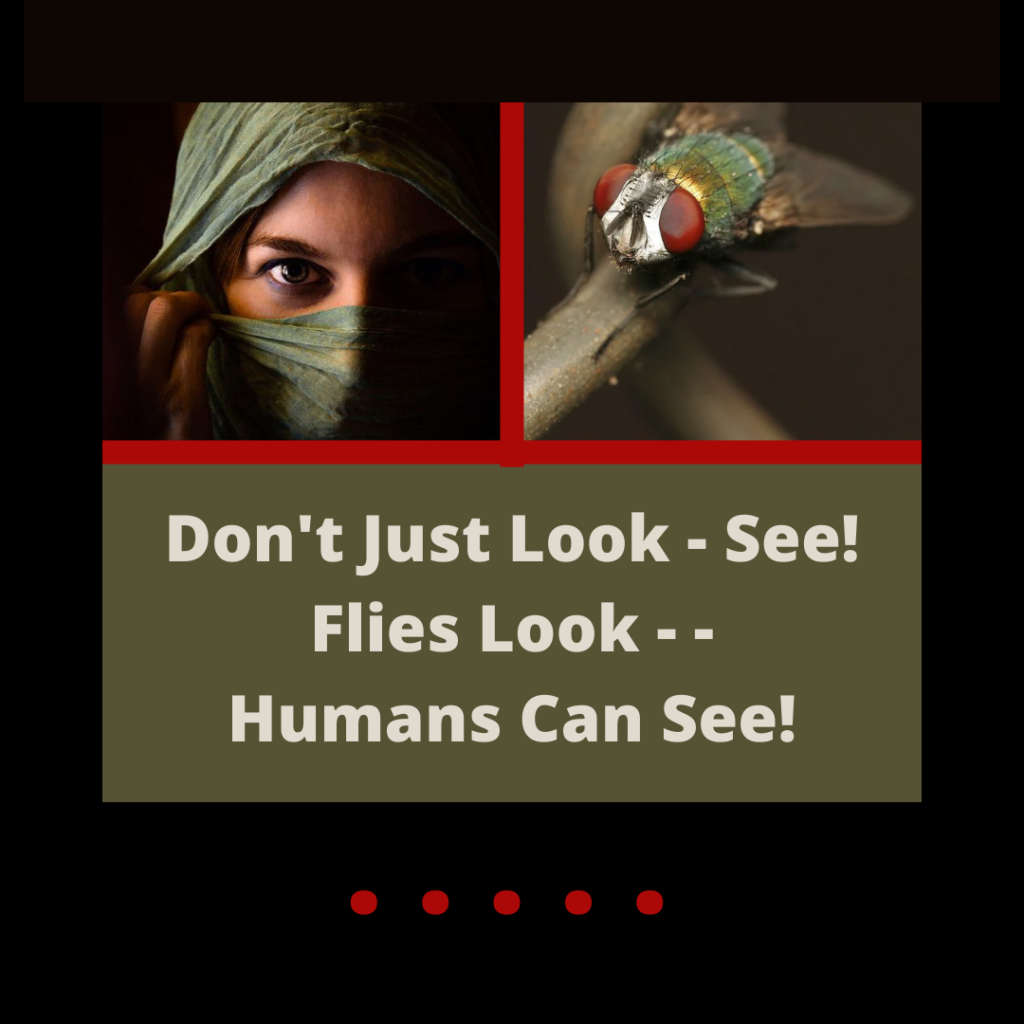
Looking is nothing more than image recognition. Seeing is a deeper thing. It has to do with perceiving and with understanding and with imagination and with empathy and feeling.
True artists and writers must never become numb to life. They must learn to look for the fire that is always burning–that is always re-charging. After finding those flames, the artists and writers must see all around themselves, with clear, perceptive eyes. After that, the artists and the writers must learn to distill what they have perceived, and finally, they can share what they have seen.
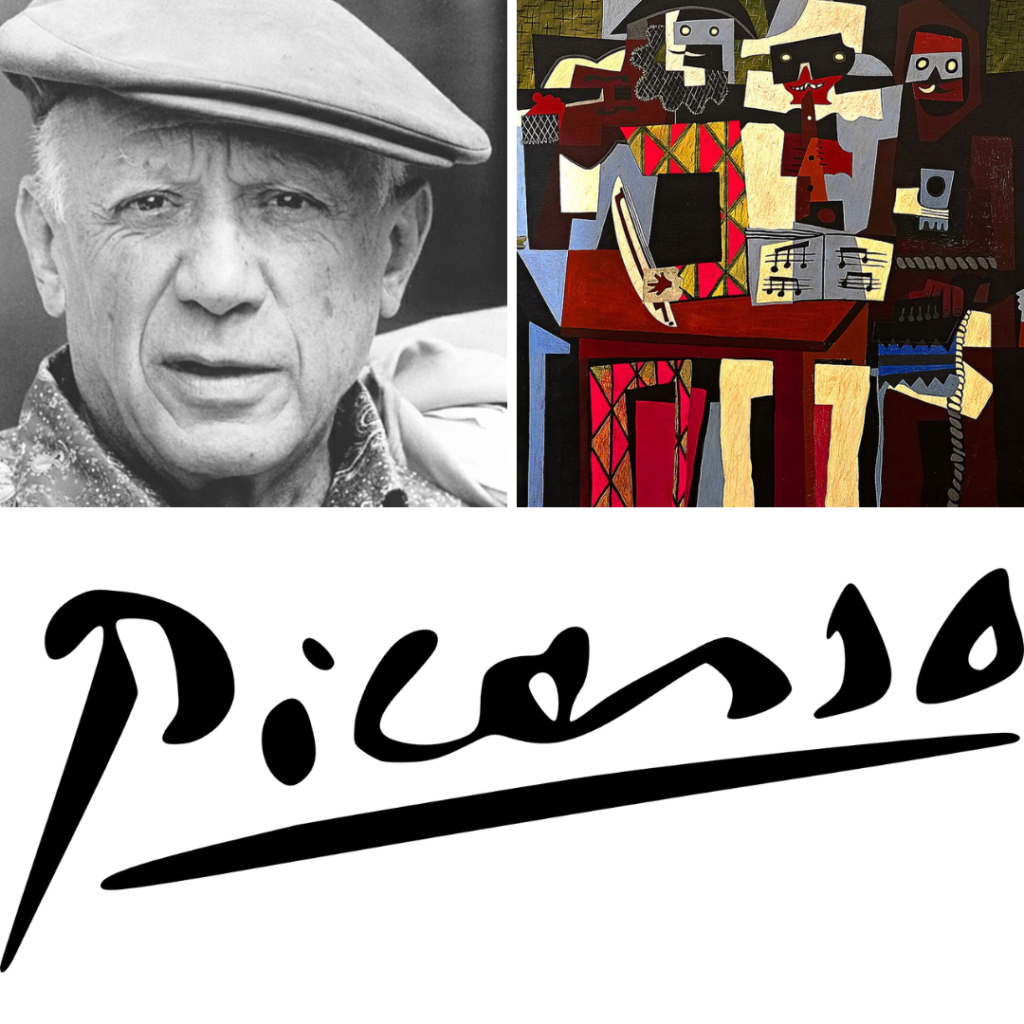
Picasso said: “Je vois les autres.”
In English, Picasso essentially said: I see for other people–or i see what other people are not able to see,
The mission of every artist and writer should be that of seeing for others around themselves–seeing for the people who, for whatever reason, cannot or will not see for themselves.
“The darkness has ink eyes, and if you stare long enough, you’re going to see it blink black. That’s the moment to start writing.” – Jarod Kintz
But the entire creative process begins with the ability to see. It begins with the eyes. The eyes have it.
“The soul, fortunately, has an interpreter – often an unconscious but still a faithful interpreter – in the eye.” – Charlotte Brontë
“To learn to see- to accustom the eye to calmness, to patience, and to allow things to come up to it; to defer judgment, and to acquire the habit of approaching and grasping an individual case from all sides. This is the first preparatory schooling of intellectuality. One must not respond immediately to a stimulus; one must acquire a command of the obstructing and isolating instincts.”― Friedrich Nietzsche, Twilight of the Idols
Note: Outlines Should be Indented as Follows. Your Word EditorMay Not Allow you to Indent, and I Accept that.
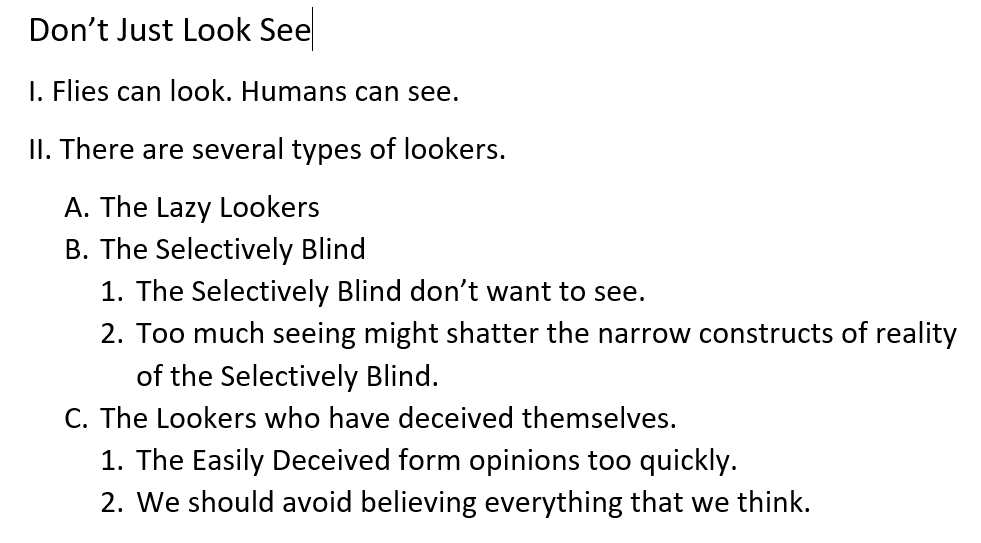
 ‘
‘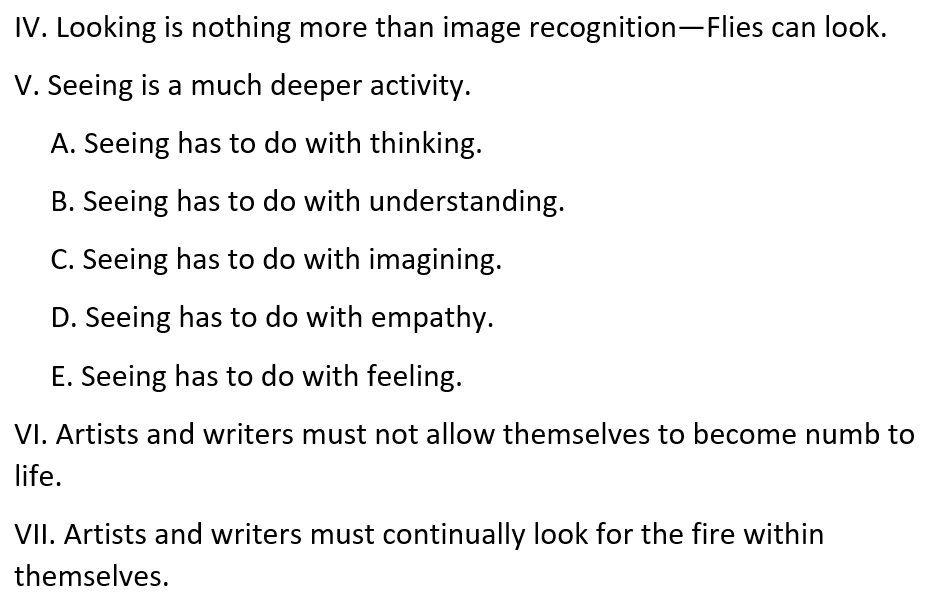
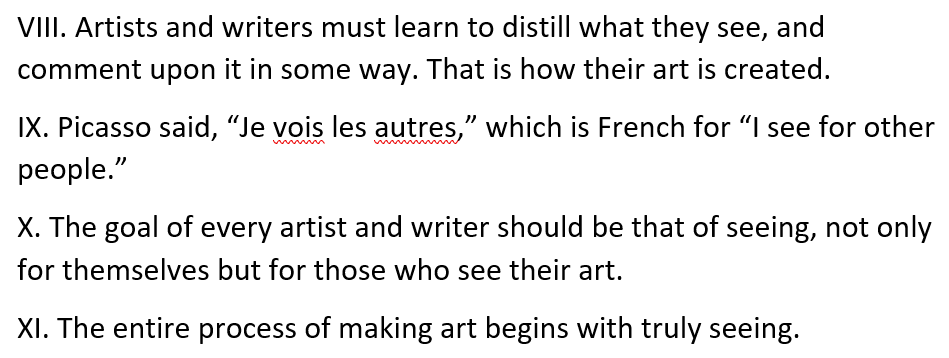
The following is the same outline, but without indents. I’ll accept your outline either way.
The title of the piece you are outlining goes at the top.
Don’t Just Look See
I. Flies can look. Humans can see.
II. There are several types of lookers.
A. The Lazy Lookers
B. The Selectively Blind
1. The Selectively Blind don’t want to see.
2. Too much seeing might shatter the narrow constructs of the reality of the Selectively Blind.
C. The Lookers who have deceived themselves.
1. The Easily Deceived form opinions too quickly.
2. We should avoid believing everything that we think.
III. Several writers have written about the importance of seeing.
A. Oscar Wilde said that the sightless soul was doomed to a type of hell.
B. Mary Oliver said that we must keep reaching for what we cannot attain.
1. The wind
2. The bird flying away
3. The idea of God
C. Annie Dillard said to go into the gaps.
IV. Looking is nothing more than image recognition—Flies can look.
V. Seeing is a much deeper activity than looking,
A. Seeing has to do with thinking.
B. Seeing has to do with understanding.
C. Seeing has to do with imagining.
D. Seeing has to do with empathy.
E. Seeing has to do with feeling.
VI. Artists and writers must not allow themselves to become numb to life.
VII. Artists and writers must continually look for the fire within themselves.
VIII. Artists and writers must learn to distill what they see, and comment upon it in some way. That is how artists and writers make art.
IX. Picasso said, “Je vois les autres,” which is French for “I see for other people.”
X. The goal of every artist and writer should be that of seeing, not only for themselves but also for those who encounter their art.
XI. The entire process of making art begins with truly seeing.
Discover more from Jacki Kellum
Subscribe to get the latest posts sent to your email.
